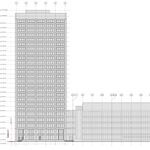Memph
Active Member
The trend of population loss in "mature" neighbourhoods, both in the cities, and in built out suburbs, appears to have been not limited to Toronto. Calgary and Edmonton had a similarly pronounced trend as well. However, this has been much less pronounced in Vancouver. Winnipeg, Montreal and Quebec City were somewhere in between. In Halifax, Ottawa, Hamilton, KW, London and most small cities, these built out neighbourhoods actually gained population. Some built out neighbourhoods in outer Toronto suburbs like Brampton, Oshawa and Milton appear to have "filled up" as well.
Last edited:





/cloudfront-us-east-1.images.arcpublishing.com/tgam/H7454T4HBZLA7BKOK5UM2YMGB4.JPG)


